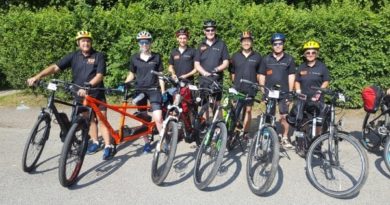Electric bike experts: Which markets are yet to realise the potential?
There are very few electric bike naysayers remaining in the bicycle business. If you know of any, it’s time to talk them round. When market study, upon market study, upon market study points to an increasingly rare opportunity for the business to turn a profit and attract new faces to cycling it’s time to sling a leg over and believe the hype.
Global markets are however accepting e-bikes at a vastly differing rate. Finding this trend curious, CI.N turned to a panel of experts to ask: which markets are leading and which are still to fully understand the potential?
Our panel of experts include:

Ray Verhelst: We have two distinct camps developing in the U.S. market.
The large international brands who have been successful in Europe selling
at double-digit annual growth figures are all abiding by the EU regulations. With the exception of the increased speed, which can be adjusted through the controller, what is being imported into the U.S. is based on the EU platform. For the opposite side of the camp, we have second tier brands (based on overall sales volume), that are working with Asian motors who have been producing hub drives consistently in the 500 to 750 watt power range. Many of the crowdfunded and other alternative financed businesses are attempting to build unique brands around these drive systems.
Oddly, many U.S. labels are attempting to make their e-bikes look more like classic motorcycles. From our organisation’s perspective, we are troubled by so many of the U.S. importer and assembly companies who are knowingly flirting with the law by promoting bikes that exceed the legal speed limits set at the Federal level.
In Asia, electric bikes have long been the go-to method of transportation for the working class, simply because this was all they could afford. But out of the 37 million e-bikes produced and sold each year only 10% are destined for export.
Outside of Asia, the second most dominant user base of pedal-assisted bicycles is Europe. Having already been considered a high-use market for traditional cycling, especially within urban markets, it was a natural for the adoption of assisted cycling to grow into a significant share.
 Edward Benjamin: In places where electric bikes are well represented in the market, we can see that buyers will choose electric over manual bicycles at an ever-increasing pace. In China, 1 in 2 bikes sold is electric. In Holland, it’s over 1 in 4. This leads me to believe that a stable, eventual, market share of e-bikes will be about 50%.
Edward Benjamin: In places where electric bikes are well represented in the market, we can see that buyers will choose electric over manual bicycles at an ever-increasing pace. In China, 1 in 2 bikes sold is electric. In Holland, it’s over 1 in 4. This leads me to believe that a stable, eventual, market share of e-bikes will be about 50%.
Given that premise, along with the knowledge that the world bicycle market is in the area of 130 million units per year plus we can predict a market of 65 million e-bikes per year. This is not including the replacement of many mopeds and motorcycles with electric versions, which might add another 30-40 million units.
A rough estimate of the market today is 34 million units worldwide. Most of these, about 30 million are sold in China, which has been at a sales plateau for a few years now.
European sales continue to grow, however, there are markets where growth has just started, or where the e-bike is barely present. Those markets are among the most promising for the future. This includes USA, where perhaps 240,000 were sold last year, India, where perhaps one million were sold and South East Asia where the numbers are not known yet. I have covered about half of the world’s population there. Most live in big cities, most are affluent enough to buy an e-bike.
Our industry has just begun.
Clive Gosling: The UK is certainly one of the slowest markets to capitalise
on the e-bike wave. I think this is because of our terrain, we just don’t have the same topography as mainland Europe. I also think our mentality as a country to the average value of a bike is a lot lower than our EU counterparts where they have often been raised with bicycles as a stable transport solution. The USA seems the slowest to adopt e-bikes, but I think they have trail access considerations much higher up their list of concerns compared to some other markets.
Niko Lindner: The leading E-bike markets in Europe are Germany, the Netherlands, France and Austria. The rest will follow that’s only a question of time and, unfortunately, money. We need to consider that e-bikes are really expensive. For a good quality e-bike you need to spend at least €2,000.



